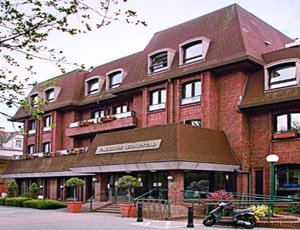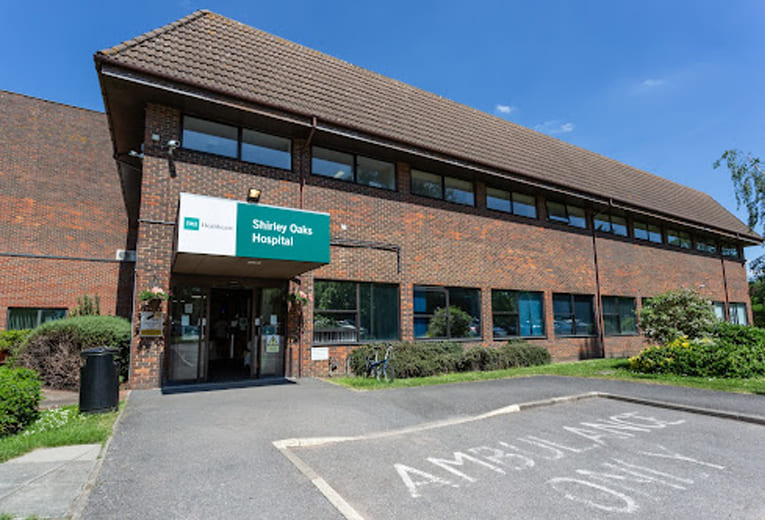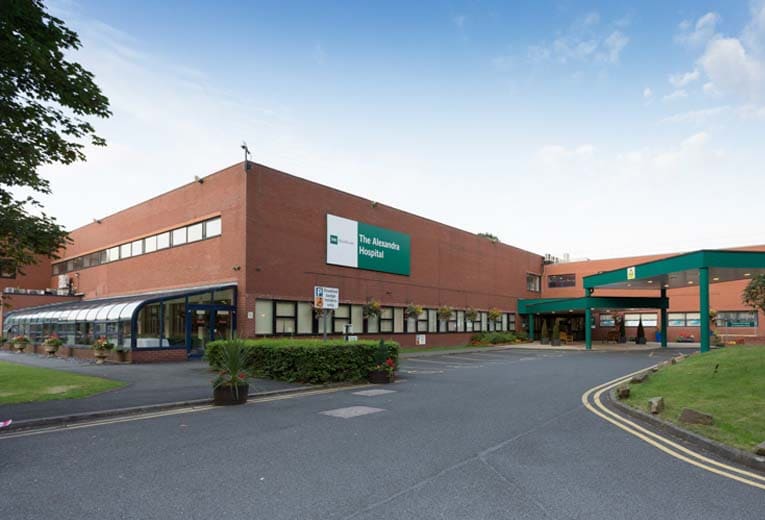Treatment cost

Apart from in-detail treatment procedures available, Parkside Private Hospital located in London, United Kingdom has a wide variety of facilities available for International Patients. Some of the facilities which are provided by them are Accommodation, Airport Transfer, Choice of Meals, Interpreter, SIM, TV inside room. Also listed below are some of the most prominent infrastructural details:


Shirley Oaks Hospital is a multispeciality hospital established in 1986 and is part of Circle Health Group. The hospital is located on the outskirts of Croydon in Shirley Oaks Village. The hospital offers a wide range of diagnostic and treatment services to patients allowing them to choose the services that they wish to avail in a hassle-free manner.
The hospital is a multispecialty facility that offers all types of treatments from 15+ specialties, including general medicine, ophthalmology, gastroenterology, and dermatology. Shirley Oaks Hospital is associated with 80+ consultants from within the UK.
The hospital offers services and treatments to patients under the age of 18 years and above.
Shirley Oaks Hospital offers a very warm and comfortable environment to the patients, from the moment they enter the building, whether for consultation or inpatient stay.

The Alexandra Hospital has access to modern equipment and private facilities for patients in Manchester, Stockport, and Cheshire. The hospital offers Outpatient Services to children from 0-18 years and day-case inpatient procedures for 3-18 years.
Established in 1981, the hospital is a 128-bedded facility offering treatments in more than 20+ specialties. The hospital has a friendly and caring staff. Equipped with world-class technology, the hospital is known for safe and effective outcomes across a wide range of treatments-from complex cases to minor surgery.
The Alexandra Hospital has dedicated radio imaging and biochemistry departments offering a wide range of tests being performed like X-ray, Ultrasound, CT Scan, MRI, DEXA Scan, etc.
The hospital ensures patient safety and provides an ideal environment with trained and experienced staff and a resident team available for 24 hours.
The hospital has efficient patient care that works hard to make each patient's time as pleasant as possible.
Craniotomy surgery is one of the most common types of brain surgery conducted to treat a brain tumor. It mainly aims at removing a lesion, tumor, or a blood clot in the brain by opening a flap above the brain to access the targeted area. This flap is removed on a temporary basis and again put in place when the surgery is done. Around 90 percent of the cases of brain tumors are diagnosed in adults aged between 55 and 65. Among children, a brain tumor is diagnosed within an age range of 3 to 12 years.
Craniotomy procedures are conducted with the help of magnetic resonance imaging (MRI) scans to reach the location precisely in the brain that requires treatment. A three-dimensional image for the same is achieved of the brain in conjunction with localizing frames and computers to view a tumor properly. A clear distinction is made between abnormal or tumor tissue and normal healthy tissue and to access the exact location of the abnormal tissue.
In a minimally invasive craniotomy procedure, a burr hole or a keyhole may be created to access the brain to fulfill the following purposes:
When there are complex craniotomies involved, the procedure may be referred to as a skull base surgery. In this kind of surgery, a small portion of the skull is removed from the bottom of the brain. This is the region where delicate arteries, veins, and cranial nerves exit the skull. Complicated planning is done to plan such craniotomies and understand the location of the lesions. This type of approach is usually employed for:
Primary brain tumors are much less common than secondary brain tumors. Primary ones are found to originate very close to the brain itself or in the tissues very close to it, such as the covering membranes of the brain, including the meninges, cranial nerves, pineal, or pituitary gland. It begins with normal cells, which at a later period undergoes some mutational errors in their DNA. The mutation triggers cells to grow and divide at a very high rate while healthy cells keep dying around it. This results in a mass of abnormal cells which gives rise to a tumor. Unlike primary tumors, the secondary tumors begin as cancer elsewhere and spread to the brain.
No matter what the goal of the surgery is, it is best to ensure that the incision is made to address the intracranial lesion keeping some principles in mind. A wide variety of intracranial processes can be done via a craniotomy with a different variety of incisions. Some of these variations include frontal craniotomy, pterional craniotomy, temporal craniotomy, decompression craniectomy, and suboccipital craniotomy.
Ask your healthcare adviser for the best multiple options and choose the one that meets your expectations
Craniotomy cost in London varies from one hospital to the other. The top hospitals for Craniotomy in London covers all the expenses related to the pre-surgery investigations of the candidate. The Craniotomy package in London includes the fees of the surgeon, hospitalization and anesthesia as well. Stay outside the package duration, port-operative complications and diagnosis of a new condition may further increase the Craniotomy cost in London.
Many hospitals in London perform Craniotomy. The top hospitals for Craniotomy in London include the following:
After discharge from the hospital, the patient has to stay for another 23 days in the country for complete recovery. This is important to ensure that the surgery was successful. During this time, control and follow-up tests take place to check for medical fitness.
London is one of the most popular cities for Craniotomy in the world. The country offers the best cost of Craniotomy, best doctors, and advanced hospital infrastructure. However, some of the other popular destinations for Craniotomy include the following:
There are certain expenses additional to the Craniotomy cost that the patient may have to pay for. The per day extra expenses in London per person are about 55 USD.
It is possible for patients to opt for video telemedicine consultation before they come for Craniotomy in London. The following are some of the top doctors offering Craniotomy in London:
Some of the most sought after doctors available for online video consultation for Craniotomy in London are:
| Doctor Name | Cost | Book Appointment |
|---|---|---|
| Dr. Mohamed Abdalla | 250 | Book Now |
The average duration of stay at the hospital after Craniotomy is about 5 Days for proper care and monitoring. The patient is subjected to several biochemistry and radiological scans to see that everything is okay and the recovery is on track. After making sure that patient is clinically stable, discharge is planned.
There are more than 2 Hospitals that offer Craniotomy in London. These hospitals have the required expertise as well as infrastructure available to handly patients who need Craniotomy. Additionally, these hospitals are known to comply with the international standards as well as local legal requirements for the treatment of patients.
Some of the most sought after doctors for Craniotomy in London are: